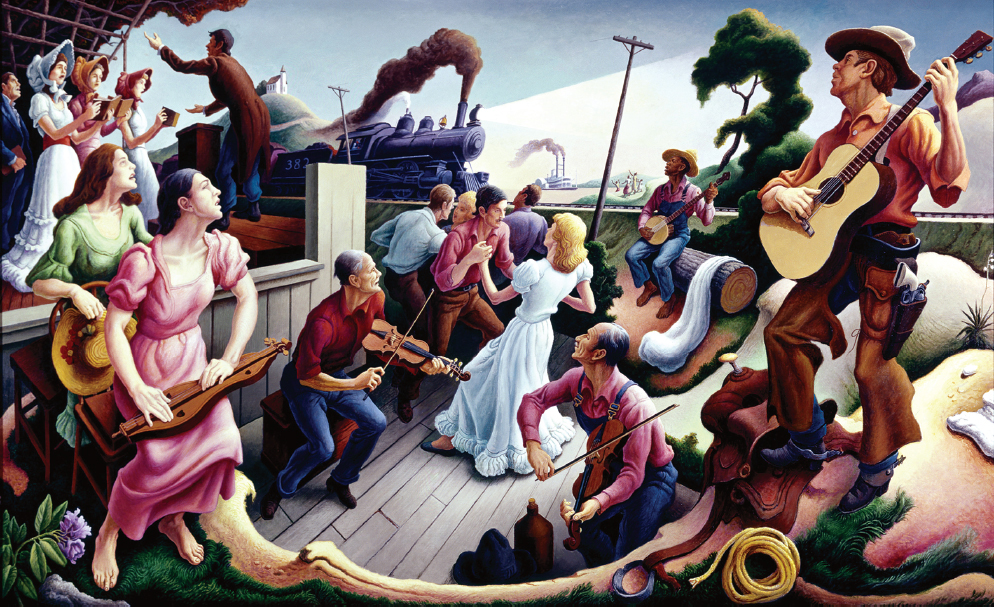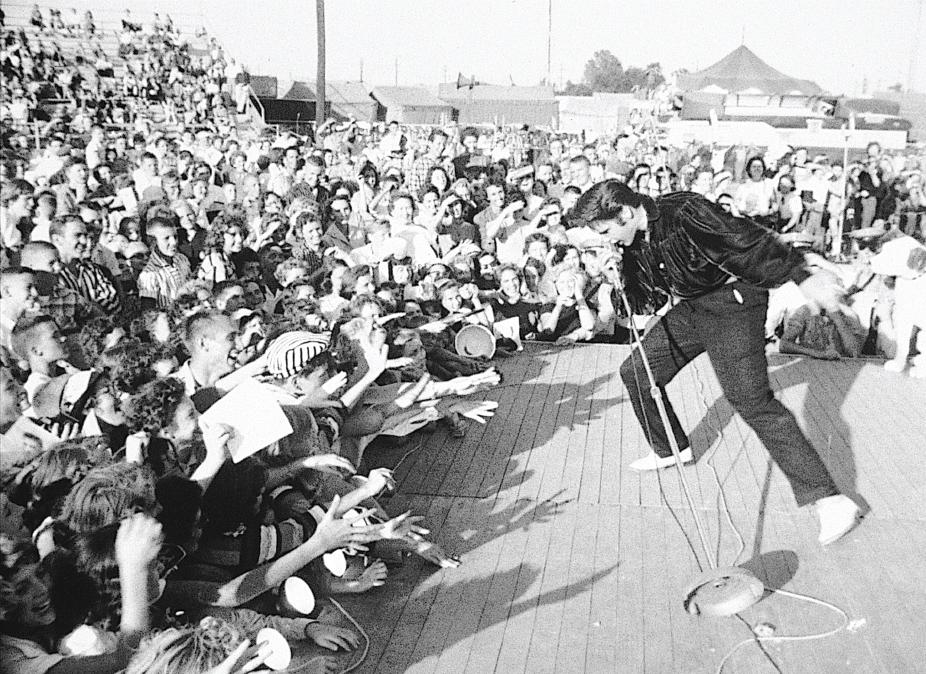Early Rock’n’Roll
The origins and subsequent history of rock conform to a pattern in American vernacular music we have seen as early as the minstrel show and then in 1930s swing: the mixing of African American and white American styles. Sometimes in rock history this mix was a relatively balanced meeting of differing styles; at other times it looks more like the appropriation of African American idioms for commercial gain by white musicians.
The very earliest rock’n’roll shows this pattern, emerging after World War II from the blending of hillbilly or country music with rhythm and blues. Country music was a white rural style derived from southern and southwestern folk song and emphasizing acoustic guitar, fiddle, and voice. Rhythm and blues was a black urban updating of earlier blues, marked by more pronounced, driving rhythms and electric guitar accompaniment.
Together they created the first rock’n’roll style, rockabilly, and the first superstar of rock’n’roll, Elvis Presley. His amazing string of hits in the late 1950s (“Heartbreak Hotel,” “Love Me Tender,” and many others) combined a lyrical style derived from white popular singers with the strong beat and passionate, throaty vocal delivery of rockabilly. Many of these hits (for example, “Hound Dog”) were Elvis’s versions of songs originally recorded by black artists.
Across the late 1950s a string of musicians, both white (Jerry Lee Lewis, Buddy Holly) and black (Fats Domino, Little Richard, Chuck Berry), followed Elvis up the charts — and soon it was “Rock around the Clock,” as Bill Haley had declared in his 1955 hit. Radio stations and record companies alike realized there was a lasting market for the new sound.

